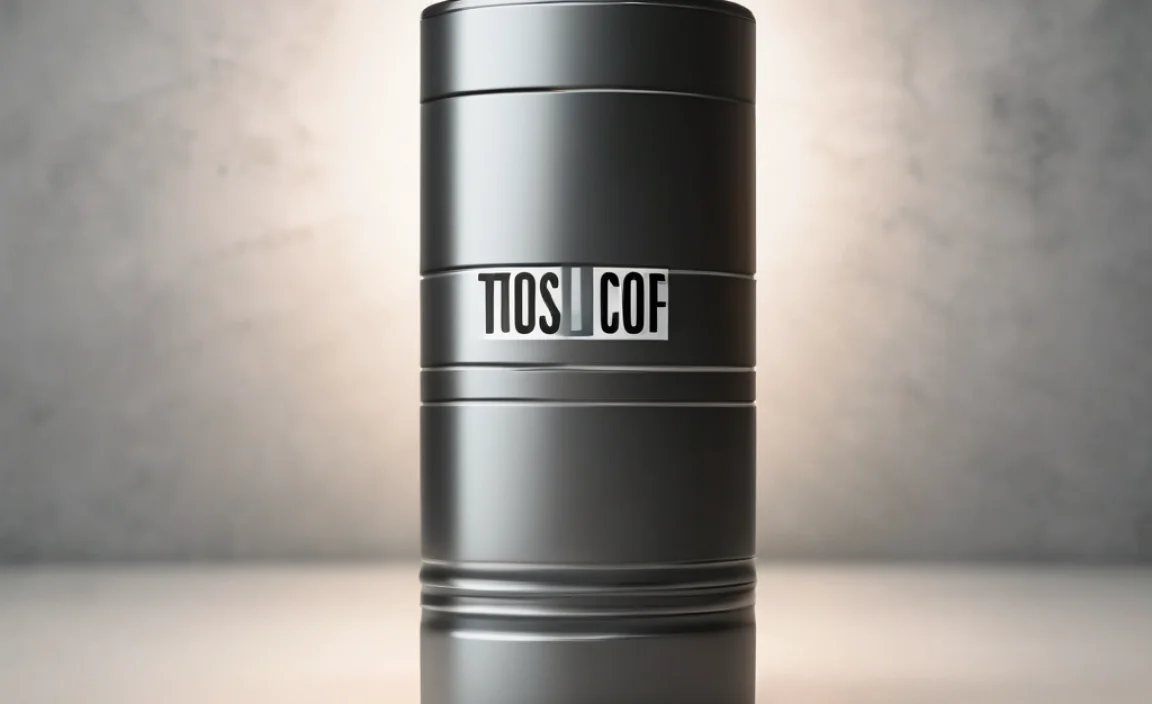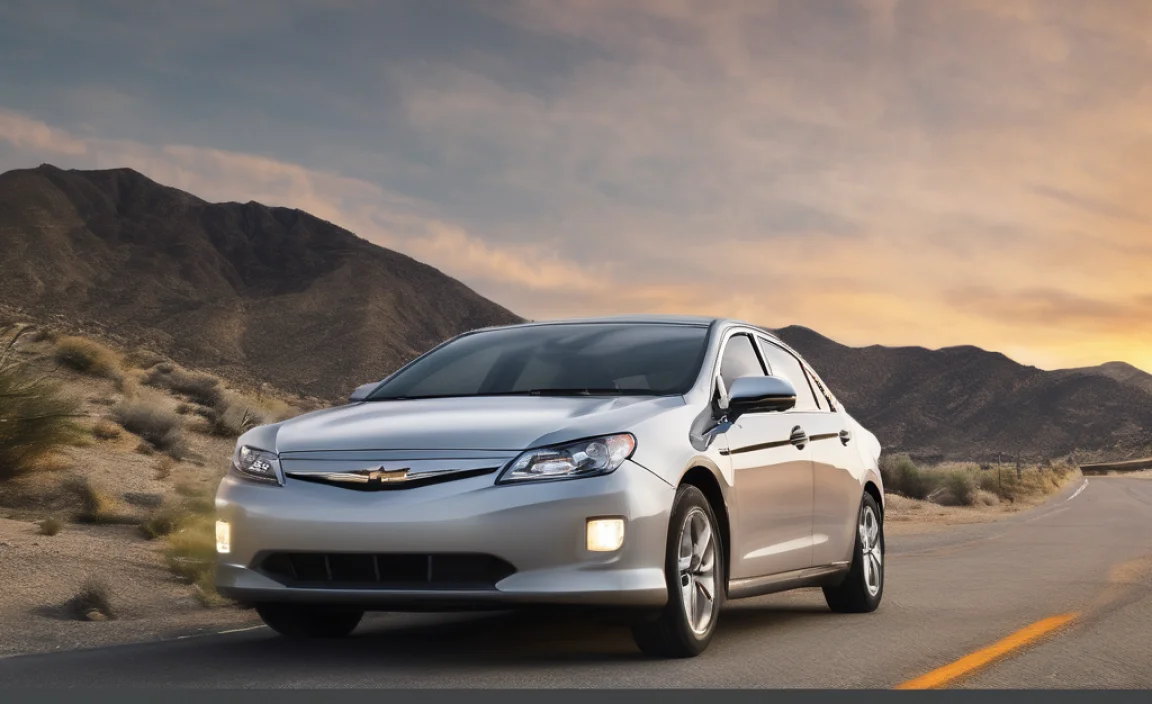A battery charge controller for solar power manages the energy from your solar panels to safely and efficiently charge your batteries, preventing overcharging and ensuring a long battery life for your off-grid or backup power system.
Are your solar panels working as hard as they can for you? Sometimes, without the right gear, the power they generate doesn’t get to your batteries as smoothly as it should. This can lead to batteries not charging fully or even getting damaged over time. It’s a bit like trying to pour water into a cup that’s already too full – things get messy and wasteful.
Don’t worry, though! There’s a simple, smart solution. It’s called a battery charge controller, and it’s a small but mighty device that acts as the traffic cop for your solar power. We’ll walk through exactly what it does, why you need one, and how to pick the perfect one for your setup. By the end, you’ll feel confident about keeping your solar system running at its best.
What Exactly is a Battery Charge Controller for Solar Power?
Think of a battery charge controller as the brain of your solar power system’s battery charging process. Its main job is to act as a gatekeeper between your solar panels and your batteries. It takes the electricity produced by your solar panels and makes sure it’s delivered to your batteries in a safe and controlled way.
Without a charge controller, the voltage from solar panels can fluctuate wildly, especially on cloudy days or when the sun is directly overhead. If this uncontrolled power goes straight to your batteries, it can lead to a few problems:
- Overcharging: This is when a battery receives too much power for too long. It can cause the battery to overheat, swell, and permanently lose its ability to hold a charge, shortening its lifespan significantly.
- Deep Discharge: While not the primary role of charging controllers, some advanced controllers also help prevent the battery from draining too low, which can also damage certain battery types.
- Reverse Current Flow: At night, or when clouds block the sun, the battery can actually discharge back through the solar panels. A charge controller prevents this from happening.
Essentially, the charge controller makes sure your batteries get just the right amount of power, at the right voltage and current, to keep them healthy and performing well for years to come.
Why is a Battery Charge Controller So Important?
Using a battery charge controller isn’t just a good idea; it’s crucial for the health and longevity of your solar power setup. Let’s break down why:
Protecting Your Investment
Batteries, especially deep-cycle batteries used in solar systems, are often the most expensive part of the setup. A charge controller acts as an insurance policy, preventing the damage that can quickly render these batteries useless. Protecting your batteries means protecting your entire solar investment.
Maximizing Battery Life
Proper charging and discharging cycles are key to a long battery life. A charge controller ensures that your batteries are charged gently and efficiently, avoiding the stresses of overcharging or deep discharge (in some cases). This gentle treatment translates directly into more years of reliable power for you.
Ensuring System Efficiency
By managing the flow of power, charge controllers help your solar panels operate at their peak efficiency in relation to your battery bank. They can optimize the voltage and current coming from the panels to best suit the battery’s current charge level.
Safety First
Unregulated electrical systems can be dangerous. Overcharging batteries can lead to excessive heat, potential gas buildup (in some battery types), and even fire hazards. A charge controller adds a critical layer of safety by preventing these dangerous conditions.
Enabling Advanced Features
Many modern charge controllers offer advanced features that can further enhance your system. These might include:
- Temperature compensation (adjusting charge based on battery temperature)
- Load control (managing power to connected devices)
- Data logging and monitoring (keeping track of system performance)
- Battery equalization (a specialized charge cycle for certain battery types)
Types of Battery Charge Controllers
When you start looking for a charge controller, you’ll quickly find there are two main types: PWM and MPPT. They both do the same core job, but they go about it in different ways, with one being more efficient than the other in most situations.
1. PWM (Pulse Width Modulation) Charge Controllers
PWM controllers are the simpler and generally less expensive option. They work by essentially connecting the solar panels directly to the batteries, but they do so in a pulsed manner. When the battery is nearly full, the controller rapidly switches the connection on and off. This “pulses” the power, averaging out the voltage and current to bring the battery to a full charge without overcharging.
How they work: Imagine a light switch that you flick on and off very quickly. The faster you flick it, the dimmer the light appears. A PWM controller does something similar with the electrical current. It essentially “throttles” the power going to the battery.
Pros:
- Lower cost
- Simple to use and wire
- Compact size
- Good for smaller systems where panel voltage closely matches battery voltage.
Cons:
- Less efficient, especially when panel voltage is much higher than battery voltage or in variable weather conditions.
- Can be less effective at fully charging batteries in cold weather.
Best for: Small, basic solar setups like charging a single RV battery, a small cabin system, or a simple off-grid shed where cost is a primary concern and system size is modest.
2. MPPT (Maximum Power Point Tracking) Charge Controllers
MPPT controllers are the more advanced and efficient option. Their key advantage is their ability to “hunt” for and lock onto the “maximum power point” of the solar array. Simply put, solar panels produce different amounts of power (voltage and current) depending on the sunlight, temperature, and load. An MPPT controller constantly adjusts its operation to extract the absolute most power possible from the panels at any given moment.
How they work: An MPPT controller can convert the higher voltage from the solar panels into a lower voltage with higher current for charging the battery. This is like having a smart gear shifter in a car – it finds the optimal setting to get the most performance. This conversion process means you can use higher voltage solar panels (which are often cheaper per watt) and still charge your battery efficiently.
For example, if you have a 36-volt solar panel array and a 12-volt battery bank, a PWM controller would have to reduce the panel voltage to match the battery, losing a lot of potential power. An MPPT controller, however, efficiently converts that 36 volts into the correct charging voltage and current for the 12-volt battery, capturing much more energy overall.
Pros:
- Significantly more efficient (up to 30% more energy harvested, especially in cooler weather or when panel voltage is much higher than battery voltage).
- Can handle higher voltage solar arrays, allowing for more flexibility in panel configuration.
- Better performance in variable weather conditions (cloudy, overcast).
- Can charge batteries more effectively in cold weather.
Cons:
- Higher cost
- Can be slightly larger and heavier
- More complex wiring in some cases.
Best for: Most off-grid systems, larger solar arrays, systems where maximizing energy harvest is important, and situations where the solar panel voltage is significantly higher than the battery bank voltage. This is generally the preferred choice for serious solar users.
Choosing the Right Charge Controller: Key Factors
Selecting the perfect battery charge controller involves a few important considerations to ensure it’s the right fit for your specific solar power system. Don’t just pick the cheapest or the fanciest; pick the smartest one for your needs.
1. System Voltage
This is the first and most critical step. Your charge controller must match the voltage of your solar array and your battery bank. Common system voltages are 12V, 24V, or 48V.
- Battery Voltage: Are you using a 12V battery bank, a 24V system, or even a 48V setup? The controller must support this. Some controllers are auto-detecting and can handle multiple voltages.
- Solar Array Voltage: The maximum open-circuit voltage (Voc) of your solar panels connected in series must be less than the maximum input voltage rating of the charge controller. This specification, often found on the panel’s label and in its datasheet, is crucial, especially for MPPT controllers.
2. System Amperage (Current Rating)
The charge controller needs to be rated to handle the maximum current your solar panels can produce. This is usually measured in amps (A).
- Calculate Max Panel Current: Look at the Short Circuit Current (Isc) rating on your solar panel’s label or datasheet. If you have multiple panels wired in parallel, you add their Isc values together. If they are wired in series, the Isc is the same as a single panel.
- Add a Safety Margin: It’s highly recommended to choose a controller with a current rating at least 25% higher than your calculated maximum output from the panels. This ensures the controller isn’t constantly running at its absolute limit, which is safer and increases its lifespan. So, if your panels can produce 40A, aim for at least a 50A controller.
3. Controller Type (PWM vs. MPPT)
As we discussed, the choice between PWM and MPPT largely depends on your budget, system size, and efficiency goals.
- For small, simple systems (e.g., a few panels charging a single 12V battery), a PWM controller might suffice.
- For larger systems, or any system where maximizing power harvest is important (especially if you live in an area with less consistent sunlight or plan to use higher voltage panels), an MPPT controller is almost always the better choice for long-term efficiency and cost savings.
4. Battery Type Compatibility
Different battery chemistries (like Lead-Acid, AGM, Gel, Lithium-ion) have different charging requirements. Ensure the charge controller you choose explicitly supports the type of batteries you are using or plan to use.
- Many controllers have settings for common battery types.
- Lithium batteries, in particular, often require specific charging profiles and may benefit from controllers with advanced management features.
5. Additional Features and Connectivity
Consider what extra functionalities might be beneficial for your system:
- Temperature Sensor: Essential for lead-acid batteries, as it allows the controller to adjust charging voltage based on the battery’s temperature, preventing damage in hot or cold conditions.
- Load Output: Some controllers have a dedicated output for running DC loads (lights, pumps, fans). They can also provide low-voltage disconnect to protect batteries from over-discharge.
- Display and Monitoring: A built-in display can show you real-time system performance (voltage, current, battery state of charge).
- Connectivity (Bluetooth/WiFi): This allows you to monitor your system remotely via a smartphone app, a very convenient feature for tracking performance and troubleshooting.
Reputable manufacturers like Victron Energy, EPEVER, Renogy, and Morningstar offer excellent charge controllers with varying features. Their documentation is usually detailed and helpful for making an informed decision.
Understanding Charge Controller Settings (For MPPT)
MPPT controllers, while more complex than PWM, offer advanced settings that allow you to fine-tune your system for optimal performance. Understanding these is key to unlocking their full potential. Most modern MPPT controllers have these settings pre-programmed for common battery types, but knowing what they mean is helpful.
1. Battery Type Selection
As mentioned, you’ll likely need to select the type of battery chemistry you’re using. Common options include:
- Flooded Lead-Acid (FLA)
- Sealed Lead-Acid (SLA) – This often includes AGM (Absorbed Glass Mat) and Gel batteries.
- Lithium-ion (LiFePO4, Lithium Cobalt Oxide, etc.)
This selection tells the controller which voltage parameters and charging stages to use.
2. Charging Stages
Most charge controllers use a multi-stage charging process to bring batteries to full charge efficiently and safely. The specific stages can vary slightly, but they generally follow this progression:
Bulk Charge:
This is the initial stage where the controller delivers power at its maximum rate. The battery voltage is low, and the controller is focused on getting as much energy into the battery as quickly as possible. You’ll see the highest charging current during this phase.
Absorption Charge:
As the battery charges and its voltage rises, the controller switches to absorption mode. Here, the voltage is held constant at a specific level (e.g., 14.4V for a 12V lead-acid battery), while the current gradually decreases. This stage allows the battery to reach its full capacity without being overcharged.
Float Charge:
Once the battery is fully charged (indicated by a sustained voltage and declining current), the controller drops the voltage to a lower, maintenance level (e.g., 13.6V for a 12V lead-acid battery). This is the “float” stage. It’s enough to keep the battery topped off and compensate for self-discharge, but not so much that it causes damage over time.
Equalization (for Flooded Lead-Acid batteries):
Some controllers offer an equalization mode. This involves a controlled overcharge using a higher voltage than normal absorption charging. This process helps to mix the electrolyte and can reverse stratification and sulfation build-up in flooded lead-acid batteries, extending their life. It’s a process that should be used sparingly and only when recommended for specific battery types.
Temperature Compensation:
If your controller has a temperature sensor connected to the battery, it will adjust the charging voltage up or down based on the battery’s temperature. Batteries require higher voltages in colder temperatures and lower voltages in hotter temperatures to charge correctly and avoid damage. A common rule of thumb is approximately a 0.03V per 1°C (or 0.017V per 1°F) change per 12V nominal battery.
Important Note: Setting up lithium batteries typically involves simpler stages, often just bulk and absorption, followed by a float. Their internal Battery Management Systems (BMS) handle much of the overcharge and over-discharge protection. Always consult your battery manufacturer’s charging specifications and your charge controller’s manual.
Installing a Battery Charge Controller: A Step-by-Step Guide
Installing a charge controller is a manageable DIY task if you’re comfortable with basic electrical wiring. Safety is paramount, so always disconnect power sources before you begin. This guide focuses on the wiring connection for a typical setup. We’re assuming your solar panels are already mounted and your batteries are in place.
Tools and Materials You’ll Need:
- Battery charge controller
- Wire strippers/crimpers
- Screwdriver set (Philips and flathead)
- Wire of appropriate gauge (see below)
- Ring terminals or spade connectors (for battery and controller connections)
- Cable ties or conduit for cable management
- Multimeter (for testing voltage)
- Personal Protective Equipment (PPE): Safety glasses, gloves
Wire Gauge Considerations:
Using the correct wire gauge (thickness) is vital to prevent overheating and power loss. The required gauge depends on the current the wires will carry and the distance they travel.
- Consult a wire gauge chart; for instance, <a href="https://www.calculator.net/voltage-drop-calculator.html?engineerfield=on&type=1&V=12&=20&horizontal=true&markup=0.1&c=1&x=Calculate” rel=”nofollow noopener” target=”_blank”>this voltage drop calculator can help you determine the right size based on current, voltage, and distance.
- A general rule of thumb for small to medium systems (e.g., up to 50A, short runs) might involve 6 AWG or 8 AWG copper wire. Always err on the side of thicker wire if unsure.
Wiring Steps:
Safety First: Always make connections in the following order to minimize the risk of short circuits and damage to the controller. Disconnect all power (solar panel and battery) before starting!
Step 1: Connect the Battery to the Charge Controller
This is the most important first step. Connecting the battery first allows the charge controller to detect the battery voltage and configure itself correctly (especially for auto-detecting models).
- Identify the positive (+) and negative (-) terminals on your battery bank and on the charge controller (often labeled “BATTERY” or a battery symbol



